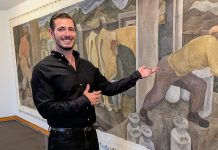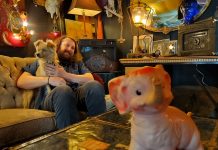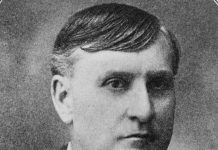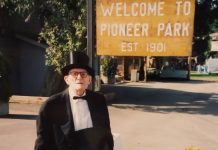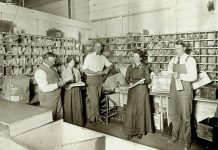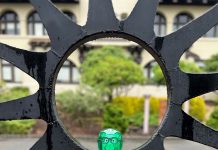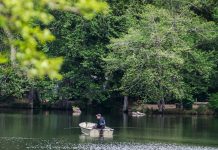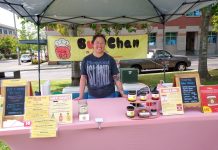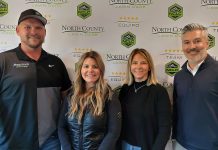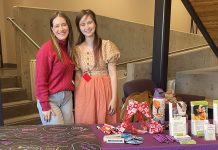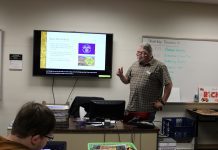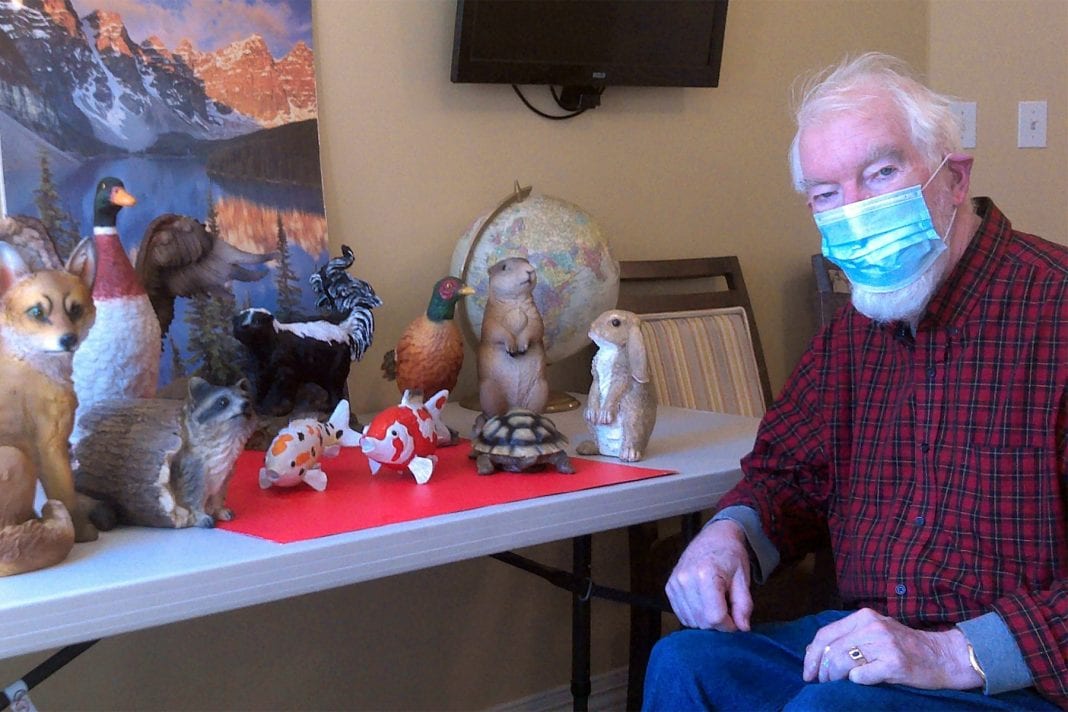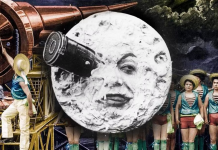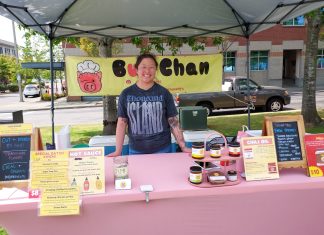The staff of The Bellingham at Orchard encounter interesting challenges as they build relationships with people experiencing memory loss. Dementia usually affects the short-term memory first, so the key to connecting with someone often means learning about a person’s past, and connecting it to their daily life. For example, many of us have heard stories of the patient who sits silent and alone, until one day they hear a tune from their youth—and suddenly they’re up on their feet, singing along and dancing. While music works for some people, others require different connections—which has led The Bellingham at Orchard to create its very own wildlife refuge.
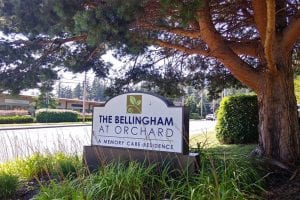
Charles Harriman, a Bellingham resident for over 30 years, has been at The Bellingham at Orchard for just over a year. He started as a certified nurse’s assistant, and soon became the Life Enrichment Coordinator. In addition to keeping his residents comfortable, he also has a very different goal in mind for them. “There may be a stigma that this is a place where they’re going to just ‘be,’ but we certainly focus on their development here,” he says. “We do full body exercise, [to help] develop their coordination and agility and flexibility, [as well as] cardiovascular exercise, fairly easy movement exercises.”
The goal of improving the lives of the residents takes many forms. “We do some dancing, which takes a good deal of balance and coordination,” says Harriman. “They’re able to start out with simple activities, with simple games, and develop to be able to do more complex games.” They also offer a basketball game, using a soft ball and a basket just a couple feet off the floor. As residents get the hang of aiming for the basket, staff moves the target higher off the ground and watch their clients rise to meet the new challenge.

Since dementia attempts to weaken the brain, Harriman prescribes plenty of the exercise for the brain as well as the body, mental games such as tic tac toe, checkers, and even chess. “Card games are another way. We had a casino night with blackjack, and a spinning wheel, and a dice table,” Harriman says. “In one of our favorite games, we have a balloon that you knock around like a volleyball, and then we add a net. And we have teams on both sides of the net, volleying back and forth.”
Earlier this year, a new resident named Jim arrived who had a lifelong background involving wildlife, both in his private and professional life. “We wanted to connect more with him,” says Harriman. “We really needed to reach him so we could help him.” So the staff collected lifelike animal sculptures, painted in detail: a golden retriever, skunk, white swan, even a lion cub and a turtle. “One of the statues is a mallard duck, and it has its wings spread wide open. He loves that one.”
With the help of these critters, the staff soon found they were able to share with Jim, and get him to open up to them. “Jim is very aware. He has short-term memory loss, but he still has his long-term memory,” Harriman says. “The animals are a way of bringing his memories back. He often talks about coming across them in his work, his studies of biology and wildlife and fisheries. He also talks about his recreation time, fishing and hiking.”
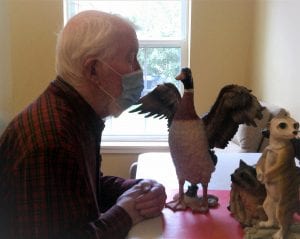
The staff arranged the statues on a desk in what they call the quiet room, and it wasn’t long before Jim was interacting with them. “Jim is a photographer, and he likes to move them around and take pictures. He’s an artist, as well, and he does some drawings. Or we’ll just sit down and talk about them,” says Harriman. “It helps us connect with him, when he tells stories about seeing these different animals in his adventures or his work. He really got involved with the animals, and I see even see him go in there on his own now.”
And when the weather cooperates, Harriman and the staff are able to set up The Bellingham at Orchard’s Wildlife Refuge, for Jim and for the rest of the residents. “We have a courtyard at our community, and it has pathways that you can walk around. At one end of the courtyard, on fair weather days, I’ll put the animals out, and Jim and the other residents, as they go outside in the sunshine, will visit with the animals there,” Harriman says. “They love to pet the dog. They like to talk about the skunk, and tell their stories about them. The animals helped to bring life to the community, and that really helps out because we want to make things cheerful. It’s something for them to look forward to—a visit with the animals.”
Sponsored

